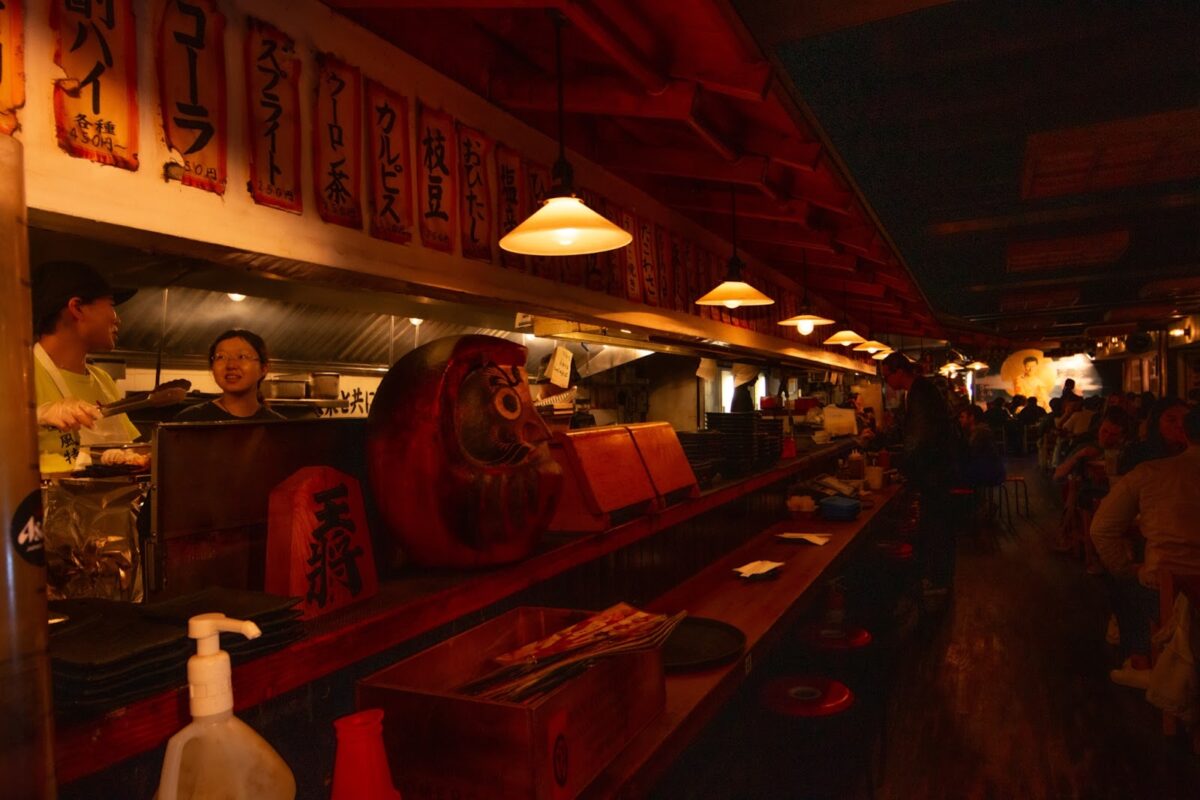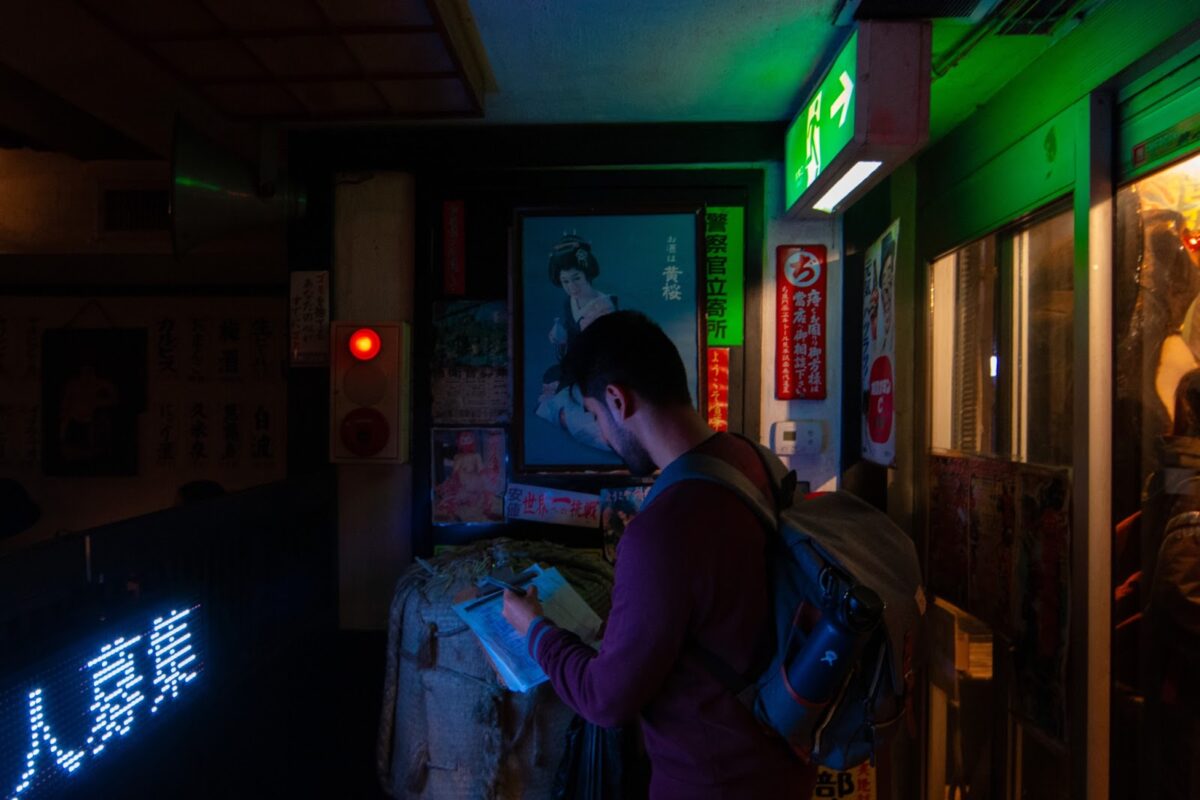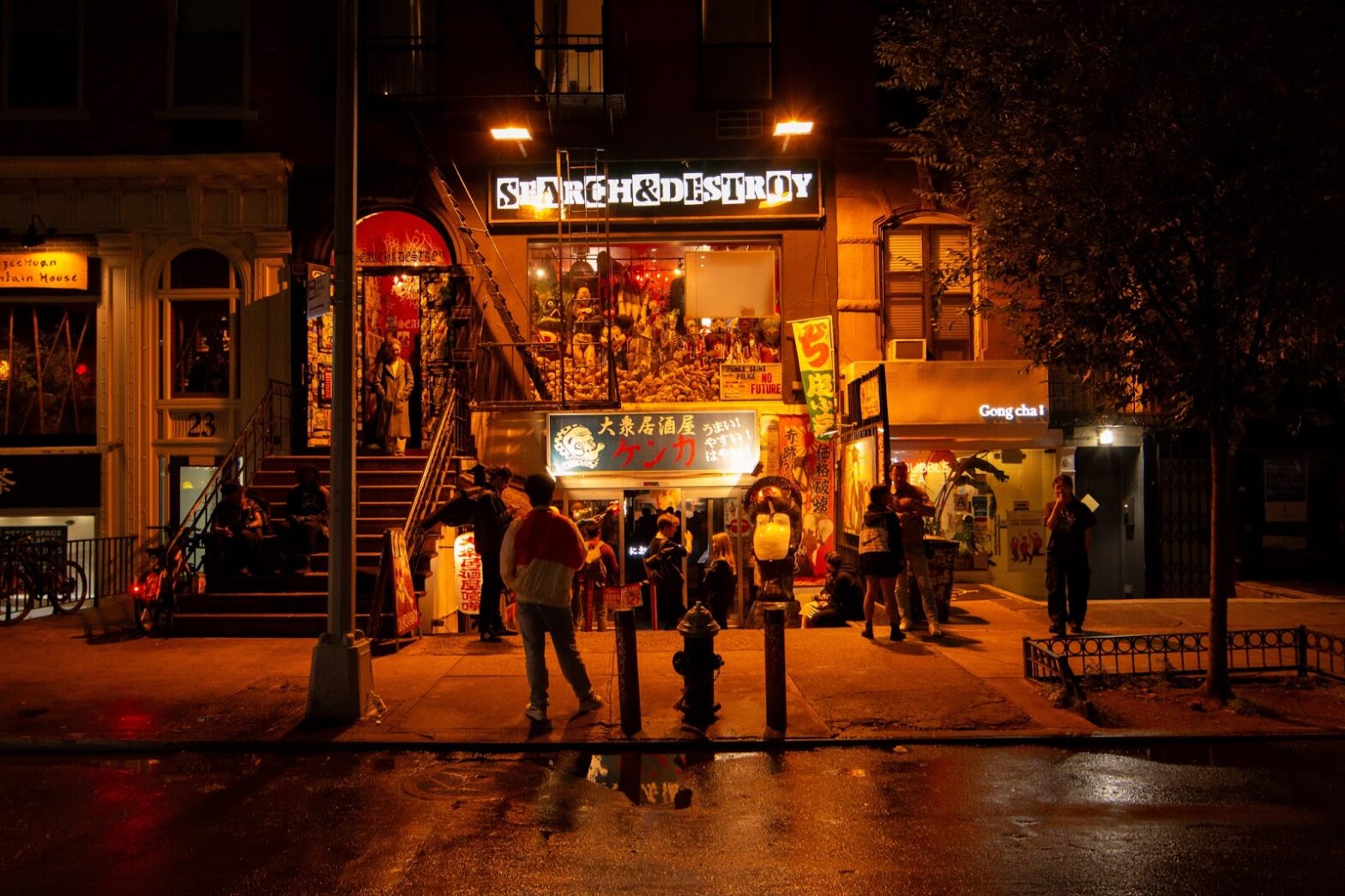Restaurant Diary is a column where food editor Clementine Hecker reviews restaurants they find noteworthy that stand out among the millions of options in NYC’s restaurant scene.
Sunken a few steps below street level, the doors of a classic St. Mark’s establishment, KENKA emits a colorful glow and the distorted sounds of nursery rhymes. The Japanese restaurant’s eye-catching entryway disturbs some, and intrigues others: vintage posters from exploitation films featuring bound women, a towering statue of a Tanuki — a Japanese raccoon dog with many legends surrounding it — and a dusty yet functional cotton candy machine all meet your eye before you pass through the doors.

The Izakaya-style restaurant serves an extensive menu of small, cheap plates and alcohol, offering a wide variety of Japanese dishes including Ramen, Sushi, Okonomiyaki, Onigiri, and Yakitori.
By no means a well-kept secret from tourists, dining here is an event great for anyone visiting town with a palette for a bondage-themed carnival ride as the setting for dinner.
The restaurant also hosts a loyal crowd of regulars, myself included. For someone like me, a good deal of mental preparation is needed before being seated. The experience at KENKA is one of both pain and pleasure, not unlike what is represented on the posters that plaster the walls. There’s an uneasiness the space facilitates that can sometimes create a barrier to enjoying the food. The chairs are small and stiffening, the music, which often sounds like the combination of political speeches and childrens nursery rhymes, blares through massive megaphones at shocking volumes, and the staff seem to be expertly trained in avoiding eye contact.
So why do I keep coming back?
The obvious answer is the price: $1.50 beers, $12 dollar pitchers, and most of the food is under $6. It is one of the few Japanese restaurants in the city where you can leave with a full belly for under $10.
However, the food’s appeal isn’t solely based on the low prices. If you know how to navigate the menu, which is plastered with stickers noting price changes and out-of-stock items, you’ll find many exceptional dishes.

The unagi — grilled eel over rice in a perfectly sweet teriyaki sauce — is on the more expensive side of the menu at $18 but one not to miss. The Kitsune udon is another classic and only $6. While the broth seems to change slightly each time I go, the noodles are consistently soft and chewy, and the tofu skin adds a delightful spongy texture. Some items on the menu taste as inexpensive as the price tag. If it’s your first time trying chawanmushi, avoid KENKA’s version. At its best chawanmushi is a light and sweet egg custard with a delicate fishy broth. While here it doesn’t taste bad, it serves more as a reminder of the possibilities of chawanmushi— a blander, less delicate version.
I love to return to my favorites when I visit, but during my most recent meal, I had the hopes of trying something new. The waiter said the pork belly soup was a popular dish, which I accompanied with the fried chicken skin, Aji sashimi, and Udon. The pork belly soup was only $5 and its rich, saucy broth and tender chunks of pork immediately made me understand why it is so popular. The soup was packed with flavor, but not much substance, so I would recommend ordering some rice or noodles with it to soak up some of the broth.
I have found the sushi menu to be underwhelming before, but the Aji, a silver-skinned mackerel, pleasantly surprised me, especially for the price of $6.
When I first dined here, everything — the prices, the menu, the decor — all confused me. Now, after many meals here I have come to understand that to truly enjoy this restaurant I can’t do it despite its quirks, I must embrace the unconventional experience they outwardly advertise.

The chaos is what gives the restaurant its charm and what makes it such a great place for unruly nights when it feels like my energy fits no other establishment. For times when I thought I was just going to dinner with three friends but end up seeing everyone I know, or impromptu 21st birthday parties, KENKA is where I will go. I know I can bring in a party of 13 on a Saturday, one hour before closing, and be seated within 30 minutes — with just a few eye rolls. The mutual frustration is balanced by an understanding that they will tolerate my chaos and match it with their own.
Each time I return for a meal, I leave exhausted, but with a new favorite dish from the menu, and never having spent more than $20.







